Long live Pauper!
This is (you guessed it!) my first article of 2014. I hope you are all having a stellar year so far (all nine days’ worth) and are proactively going after your goals. If you don’t have any goals for the year, you really should make some. Endeavor to make 2014 one incredible ride!
In order to help us attack the new year with an appropriate amount of intensity and resolve, I’m going to center today’s article around, well, attacking. Turning creatures sideways, hacking away at life totals, and getting longer breaks between rounds can all be yours for the low, low price of a couple dozen 2/2s! But why stop there? I think we should look at as many viable aggressive strategies as possible (2/2s or no) and try to find out which one is the absolute best in the format.
So where and how do we start? I’m fairly certain you all know what an aggro deck is (if you don’t, check out this article by Billy Moreno), but what really makes an aggro deck tick?
Any Pauper aggro deck worth its weight in puresteel needs to take into consideration three key components. In a typical aggro deck, these superlative components (which I like to call the "C" components) are: curve (our aggro deck’s mana curve and sequence of plays), clock (the amount of time in turns our opponent can endure a certain rate of damage), and community (the potent contribution of multiple "unimportant" cards as opposed to reliance on a specific "important" card). While there are a number of other factors to take into consideration, these three will receive much focus once we start looking at today’s decks.
Pauper Aggro Plans
It’s deceptively difficult to lump all of the aggressive Pauper decks into one group. This is due to the fact that many of the decks actually win by utilizing different "plans of attack." Yes, some combination of creatures and direct damage is typically brought into play; however, said creatures and damage are implemented in a dynamic variety of ways. Let’s have a look at what I mean.
The Swarm Plan wins through sheer numbers. It bolsters a high creature count and hopes to present a nearly unanswerable board state. Here are a few cards that work well within the swarm framework:
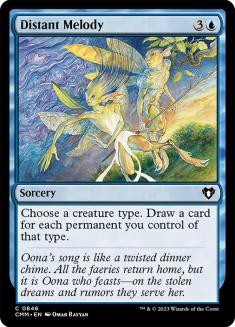
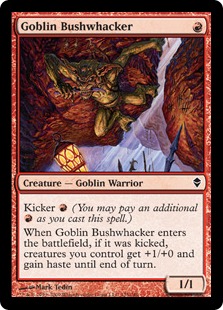
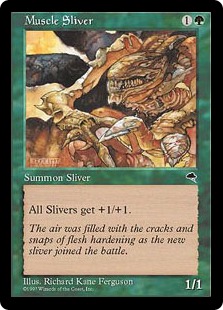
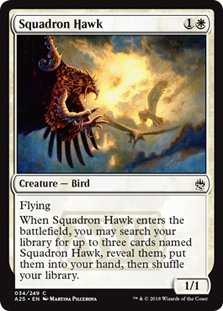
A common weakness of the Swarm Plan lies within its small creature size and subsequently low value against sweepers (Electrickery, Holy Light, Pestilence).
The Haymaker Plan wins with a single devastating knockout punch (or Hail Mary pass if that analogy works better for you). This is usually achieved by hitting the opponent with a really big creature. Case in point:
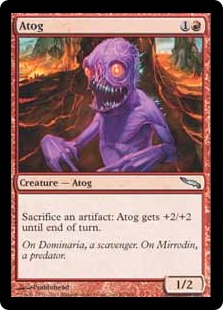
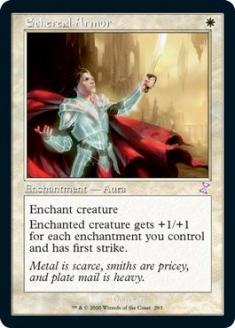
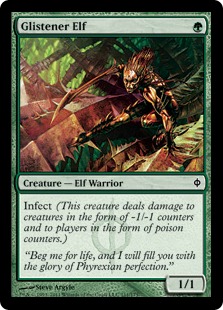
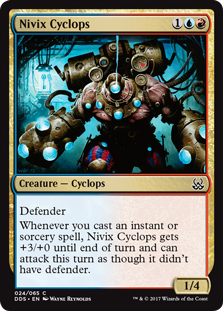
The inherent weakness of the Haymaker Plan is made clear either when the punch doesn’t land (thanks to a Fog or the countering of an Ancestral Mask, Assault Strobe, Fling, etc.) or when our big monster gets whacked unexpectedly (by Celestial Flare, Curfew, Geth’s Verdict, and so on). With many resources spent in vain, control of the game is often hard for us to recover.
The Exhaustion Plan wins through attrition. By marginalizing our opponent’s spot removal spells and defensive creatures, we typically manage to "get there" with one or two of our final threats. The benefit here is that our deck runs out of gas less rapidly and doesn’t fold to a well-timed trump or two.
Exhaustion cards are all about value. They have the ability to net two-for-ones and can sometimes disrupt the opponent’s game plan. Here are some exhausting examples:
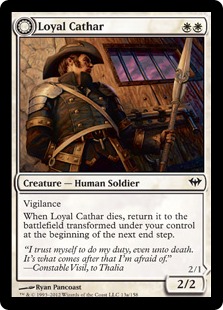
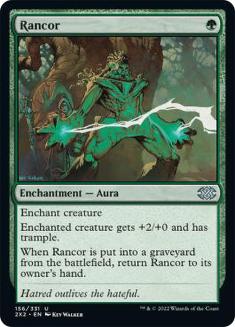
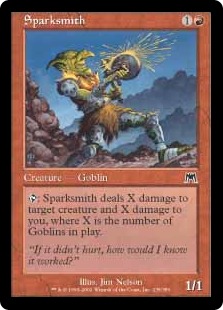
A potential problem with Exhaustion Plans is that they tend to win a bit more slowly than typical aggro decks. While this is not always a problem, there are some matchups when being able to kill on turn 4 can make a world of difference.
Pauper Aggro Options
You’ve probably realized by now that the vast majority of established Pauper aggro contenders are able to incorporate at least two of the three defined plans in some way. To illustrate this, let’s look at one of the most successful aggro decks in the format, Mono-Green Stompy.
Creatures (25)
- 4 Quirion Ranger
- 4 Jungle Lion
- 2 Rogue Elephant
- 4 Skarrgan Pit-Skulk
- 3 Safehold Elite
- 4 Nettle Sentinel
- 4 Young Wolf
Lands (17)
- 17 Forest
Spells (18)

Here we have a deck that integrates aspects of all three plans while not stubbornly committing to one.
The abundance of one-drops ensures that several threats can hit the board within the first three turns of the game. This falls in line to a degree with the swarm mentality. At the same time, a pair of Groundswells can be loosed out of nowhere for a pseudo-haymaker kill. If that weren’t enough, exhaustive cards like Safehold Elite and Young Wolf (each require two removal spells or combat trades), Rancor, and to an extent Vines of Vastwood can grind out the enemy’s final answers and achieve lethal damage.
In terms of the "C" components, Mono-Green Stompy has a commendable grasp of all three. As far as curve goes, Stompy always has a turn 1 threat and can operate on a just a few lands. Quirion Ranger goes a long way toward making this possible. A dynamic suite of pump spells bolsters both the clock and community aspects of the deck. The opponent’s clock can be shortened considerably by our eight pump spells that grant a +4/+4 bonus. And any one member of our community can in an instant become a serious threat thanks to Bonesplitter, Rancor, and the morbid-triggered Hunger of the Howlpack.
Next up we’ve got a deck that’s not limited to the "aggro" moniker, as it also incorporates attributes of the midrange and combo archetypes. This deck has performed very well for a long time and could likely be our best aggressive option. Time to check out some Affinity!
Creatures (18)
Lands (17)
Spells (25)
- 4 Thoughtcast
- 2 Fling
- 3 Perilous Research
- 4 Chromatic Star
- 4 Springleaf Drum
- 2 Prophetic Prism
- 4 Galvanic Blast
- 2 Ichor Wellspring
Sideboard

With its fair share of explosive draws, Affinity can do a nice impression of a swarm deck. This occurs when multiple Frogmites and Myr Enforcers hit the table all in a single turn. The Haymaker Plan is clearly exemplified by the cards Atog and Fling, which can potentially kill opponents from twenty life or more. The Exhaustion Plan comes in the form of cantrips and card drawers. These allow Affinity to find more threats and take the form of Perilous Research, Thoughtcast, Ichor Wellspring, and Prophetic Prism.
What I like about Affinity over Mono-Green Stompy is the fact that is has access to direct damage. It also feels a bit more unfair, which contributes to a higher number of "free wins" on average. On the flipside, its mana base is far more fragile, and it plays fewer creature threats than most Pauper beatdown strategies.
Our third deck could be considered aggro-combo and is more intensely focused on one aggro plan (in this case the Haymaker Plan). I enjoy calling the deck Izzet Fiend, but you may also know it as Eye Candy, Wee Fiend, etc.
Creatures (12)
Lands (18)
Spells (30)
- 4 Lightning Bolt
- 4 Ponder
- 4 Preordain
- 4 Assault Strobe
- 2 Mutagenic Growth
- 4 Apostle's Blessing
- 4 Gitaxian Probe
- 4 Artful Dodge
Sideboard

While the curve and community facets of this deck are (in my opinion) a bit weak, Izzet Fiend can kill on turn 3 without having dealt any prior damage. Don’t believe me? Just imagine a turn 2 Kiln Fiend followed by a turn 3 Assault Strobe plus any two additional instants or sorceries.
A primary weakness of this deck is its deliberately low creature count. A few timely removal spells or edicts can really hurt our chances of winning, and this fact sadly relegates Izzet Fiend to having (more or less) a "glass cannon" status.
Other Options
There is a whole host of other options in the format, and I’ve merely highlighted three of the most popular at the moment.
I think it’s important not to overlook a deck like Goblins for instance. The little red men have a tendency of showing up unexpectedly and nabbing a result here and there. For instance:
Creatures (38)
- 4 Goblin Cohort
- 4 Mogg Flunkies
- 2 Mogg Fanatic
- 1 Goblin Balloon Brigade
- 2 Raging Goblin
- 4 Goblin Sledder
- 2 Goblin Patrol
- 4 Mogg War Marshal
- 4 Goblin Bushwhacker
- 3 Goblin Shortcutter
- 4 Goblin Arsonist
- 4 Foundry Street Denizen
Lands (17)
- 17 Mountain
Spells (5)

Personally, I’m not a huge fan of this list. It features some severely underpowered (as in not even Limited playable) cards—namely Goblin Balloon Brigade and Seismic Stomp—and has omitted some arguably great ones (Chain Lightning, Death Spark, Fireblast, Goblin Matron, Mogg Raider, Sparksmith, etc.). The fact that this list still put up a fourth-place finish shows you just how devastating Goblins can be.
I’ve pretty much always enjoyed piloting this kind of a deck, though some strategies are able to go over the top of it.
Aside from Goblins, there are also decks like Infect (which can kill on turn 2 according to Glistener Elf), Mono-Blue Delver, Selesnya Slivers, Hexproof, and (wait for it!) White Weenie. I think all of these decks are worth pondering over to some extent since they all have something unique to offer.
I find Infect slightly interesting because it technically has some of the fastest draws in the format (turn 1 Forest, Elf; turn 2 Forest, double Groundswell and Mutagenic Growth) but doesn’t really see play. We both know why—the deck’s plan is fragile. I have only a little bit of experience playing Infect, though if I had to play it in the near future I might try this list out:
Your Turn
I’m hoping we can do a kind of follow up on this article in order to reach some sort of conclusion. What is the best aggro deck in the Pauper format? Your help is a must on this one!
What key aspects of the aggro archetype did I forget to mention? Are there any decks I overlooked or overvalued? Which deck do you think is the best and why? I’m looking forward to chatting with you guys in the next few days, so let’s get to it. Launch the attack!
